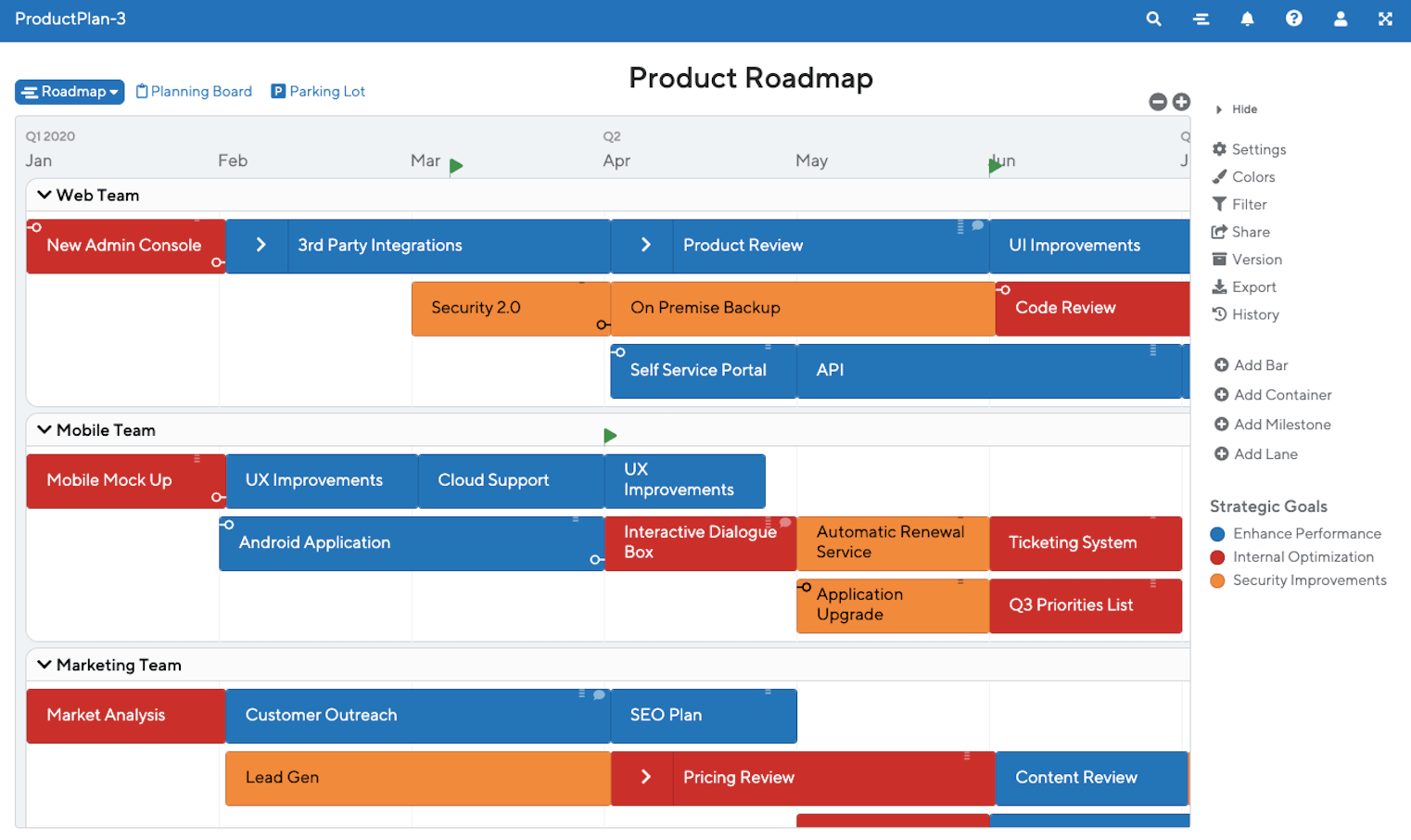If you’ve never built a product roadmap, the task can seem daunting. The roadmap is, after all, a high-profile strategic tool that can affect how your entire company coordinates its efforts. This means several teams across your organization will want to see your roadmap, maybe even challenge you on some of it, and you’ll likely be expected to present it to your executive staff. So your roadmap had better include the right mix of strategic thinking, prioritization, and evidence to support your product’s plans. In that sense, yes, it can be a daunting task.
But here’s the good news: Building a product roadmap isn’t some mysterious process that only a few longtime product managers know how to do effectively. It’s actually a relatively simple (although not easy) process that you can learn quickly with the right guidance.
So relax. If you’ve never built a product roadmap, and you’re being asked to build one now, we’ll walk you through the process below.
Helpful Resources for Product Managers Who’ve Never Built a Product Roadmap
First things first. We at ProductPlan have written extensively about building roadmaps, so you might find some of our existing content beneficial. For example:
If you want an overview of the strategic elements you’ll need to have in place before you begin building your roadmap—starting with a defendable explanation for developing the product in the first place—check out our post: building your first product roadmap from scratch.
Looking for a more nuts-and-bolts guide to product roadmap development, such as an overview of how to use roadmap components like themes, epics, swim lanes, bars, containers, timelines, etc.? Read our article: roadmap best practices.
PMs who’ve never built a product roadmap can also find some great tips and tricks in our post, creating a roadmap: a guide to get you started.
If you’d like an extensive discussion of all elements needed for a successful roadmap—from developing your initial product strategy, through effectively communicating your roadmap to various audiences—download our free eBook on product roadmaps.
Building Your First Roadmap for a New Product: Where Do You Start?
Let’s say your executive team has just asked you for a roadmap presentation to walk them through your strategic plans for the product. For the sake of this hypothetical, let’s also assume this will be a brand new product. What should you do first?
Here are the first few questions you’ll need to ask and answer about your product before you can move to the next step in the roadmap creation process.
- What problem will this product solve?
- Who is the product for?
- What other options do our target customers have today? Are there competitive products? Are there other ways of solving this problem?
- How will we differentiate our product from other solutions on the market?
- Is this product something our target customers will pay for?
This phase will obviously require conducting market research, developing user and buyer personas, and talking with your target users. But after you’ve gone through these steps and determined that there is indeed a viable market for your product, you can start to devise your product’s strategy and plan—which you’ll capture in the product roadmap.
The 2 Major Questions Your Product Roadmap Must Answer
This step in the process should be relatively simple because unlike other documents, such as the product backlog, the roadmap is a high-level tool designed to communicate only strategic information, not the day-to-day details of a product’s development.
With that in mind, your product roadmap should answer only these two strategic questions:
- What are we bringing to market?
- When will we be bringing it to market?
In some cases (or for specific audiences), you might not even want your roadmap to include timelines for your product’s development. In such cases, your roadmap should communicate only the high-level overview of your product’s major functionality and strategic goals.
What Your Product Roadmap Should Actually Look Like
Okay, so now you have an idea of what your roadmap should look like—it should be strategic, communicate only high-level information, and ideally be a flexible tool that you can present at varying levels of detail to different audiences. (You might want to highlight timelines with your development team, for example, but highlight strategic goals when presenting to executives.)
Now the question is: What details actually make it onto the roadmap?

As you can see from the sample product roadmap template below, a roadmap should include only high-level themes and functionality. In the sample template, you’ll notice the PM has listed “New Admin Console” as a major component of the next release—but the roadmap itself does not include all of the user stories and coding tasks that will go into building out that console. Those details are better kept in the backlog, project management tools, and other more tactical documents.
The work of actually writing up the roadmap should be relatively quick and simple—provided you are using the right tool for the job. In this case, that tool is a purpose-built roadmap app as opposed to a spreadsheet, presentation software, or some other makeshift tool. Native product roadmap software lets you put together a new roadmap in minutes, share it securely with anyone online, change views easily, and update it from anywhere in seconds.
So if you’ve never built a product roadmap, and you need to build one now, do it the right way: use this template to get started. We promise—it’ll be a lot less daunting than you think.





